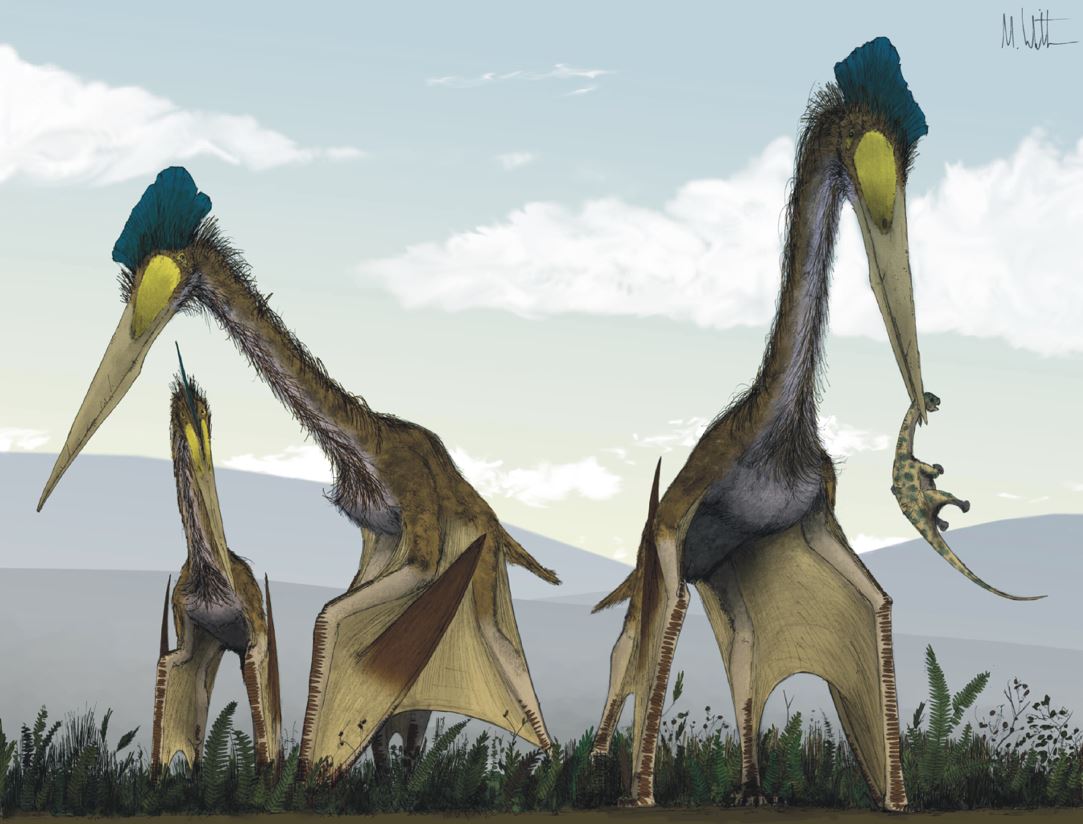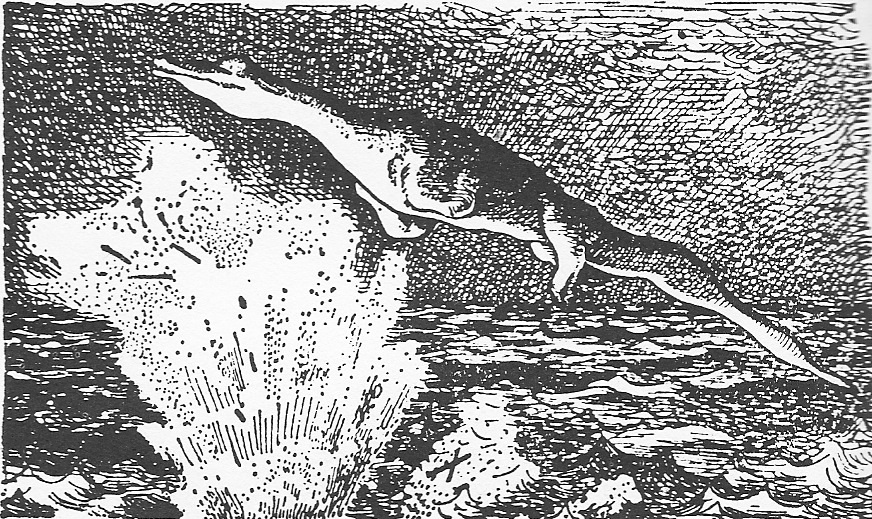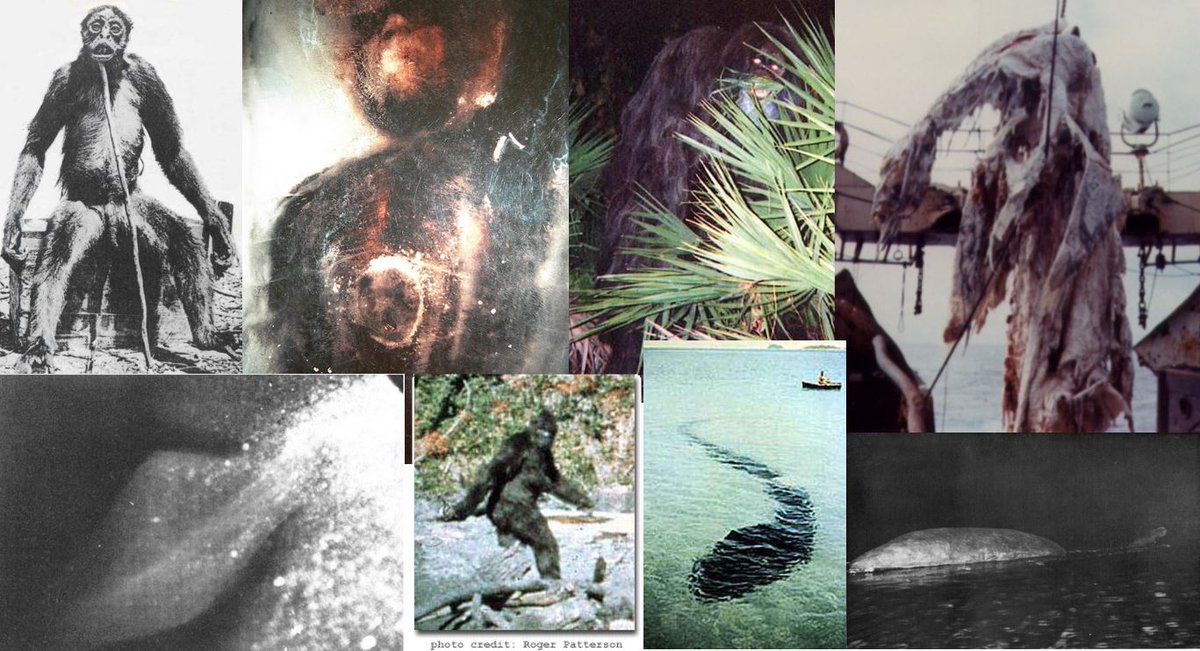
#Azhdarchids, a brief thread concentrating on my involvement with this amazing group of #pterosaurs. Azhdarchids have to be regarded as the most distinctive and unusual of pterosaur groups, and views on how they might have lived have varied considerably... (images by @MarkWitton) 



In 2008, @MarkWitton and I examined the skeletal proportions, cranial anatomy and sedimentological setting of #azhdarchids and concluded that they were strongly adapted for quadrupedal walking in terrestrial settings.... 



They were likely striding predators of small and mid-sized prey, analogous to ground hornbills. We termed this the ‘terrestrial stalking’ model. See our #OA @PLOSONE paper A Reappraisal of Azhdarchid Pterosaur Functional Morphology and Paleoecology journals.plos.org/plosone/articl… cont...
In 2013, I and colleagues described a new azhdarchid – the relatively small Eurazhdarcho langendorfensis Vremir et al., 2013 – represented by cervical vertebrae and part of the wing skeleton... #azhdarchids 

The specimen is represented by adult remains and is not a juvenile of the much larger Romanian azhdarchid Hatzegopteryx. The presence of both of these #azhdarchids in the same geological unit (the Sebeş Formation of the Transylvanian Basin) is significant because... #pterosaurs 

... it indicates that niche partitioning might have been present in sympatric #azhdarchids (egret/heron photo by @eawilloughby). We noted the presence of locations worldwide where sympatric azhdarchids occur, these taxa differing in size and hence in ecology and habits... 

Eurazhdarcho is another taxon discovered by Mátyás Vremir (who died in 2020). This paper was #OA in @PLOSONE... A New Azhdarchid Pterosaur from the Late Cretaceous of the Transylvanian Basin, Romania: Implications for Azhdarchid Diversity and Distribution journals.plos.org/plosone/articl…
The ‘terrestrial stalker’ model was challenged in 2013 by A Averianov who argued that the depositional settings of azhdarchid fossils were inconsistent with our proposal, that big theropods made our proposal problematic, and that #azhdarchids were more likely ‘scoop-netters’...
@MarkWitton and I published a response. We re-examined the environmental context in which #azhdarchids have been discovered and showed that the evidence was consistent with their being animals of continental settings. We also... 



... looked at the behaviour and ecology of those theropod contemporaneous with #azhdarchids to see if they would really present the problem which Averianov argued they would, and examined his ‘scoop-netting’ idea in order to test its viability.... 

This paper - Azhdarchid pterosaurs: water-trawling pelican mimics or “terrestrial stalkers”? - is also #OA in Acta Pal Pol and is available here: app.pan.pl/archive/publis…
The view that #azhdarchids were essentially all alike in proportions and hence similar in lifestyle was later shown by myself and @MarkWitton to be incorrect via our analysis of cervical vertebrae belonging to the giant Late Cretaceous Romanian azhdarchid #Hatzegopteryx... 





We showed that the neck of this animal was broad and thick relative to that of other giant #azhdarchids and mechanically able to resist substantial loads. This view is consistent with the absence of large predators (like theropods) from the same region... (image by @MarkWitton) 





.... and suggests that #Hatzegopteryx was a predator of animals that could have weighed tens of kilos. This study is consistent with previous proposals that some other, smaller #azhdarchids (like R.2395 - shown here - described in 2015) were relatively short-necked... 

This study - Neck biomechanics indicate that giant Transylvanian azhdarchid pterosaurs were short-necked arch predators - is again #OA and was published in @thePeerJ ... peerj.com/articles/2908/ #azhdarchids #pterosaurs
• • •
Missing some Tweet in this thread? You can try to
force a refresh





















